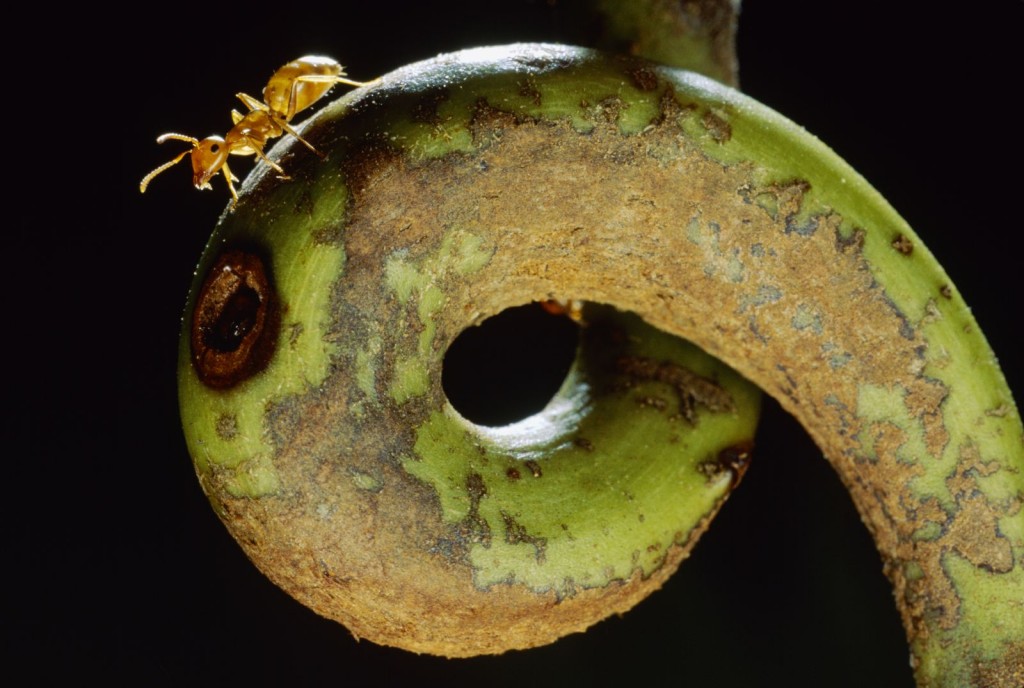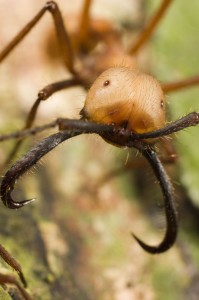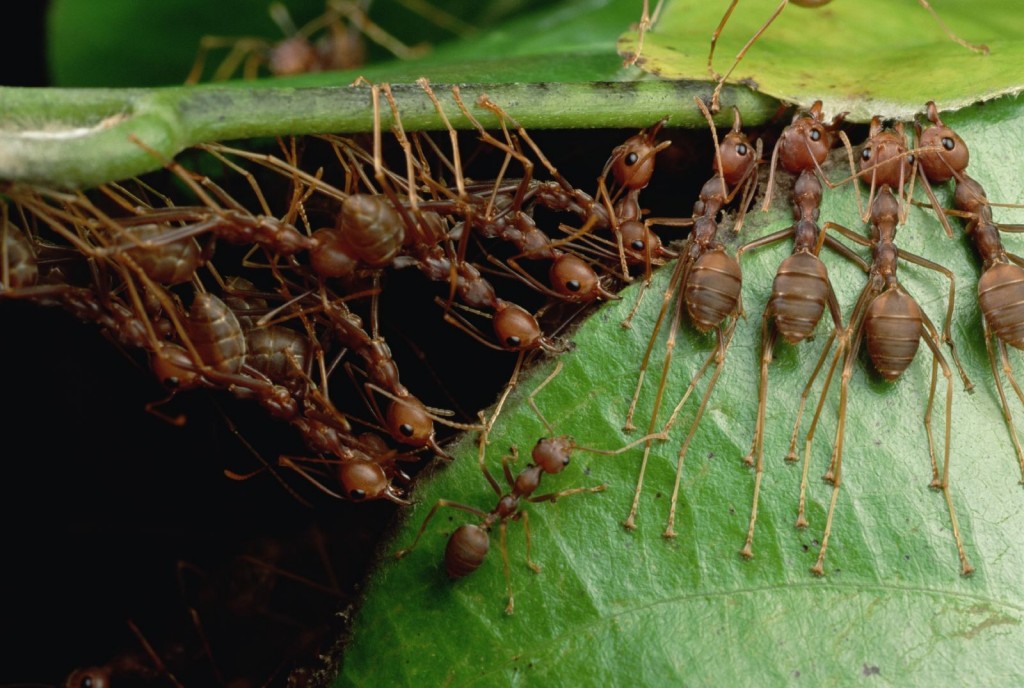Ants matter too!

Borneo Camponotus sp. Some carpenter ants live where others wouldn’t dare— inside an insect-eating pitcher plant. Photo: Mark W. Moffett/Minden Pictures , used by permission
Let’s face it. Insects don’t get a lot of love, although some get more than others.
People plant gardens to attract butterflies. Honey bees are admired as humble, hardworking marvels that help pollinate about 1/3 of what we eat. Their current plight generates considerable sympathy and attention. But ants? Please! Creepy marauding invaders! Little love for ants, I fear. Even when starring in their own show, apparently it’s necessary to hook attention with terms that cast ants in a better light!

Eciton hamatum: An army ant soldier from Panama shows its fierce jaws. Photo: Mark W. Moffett/Minden Pictures, used by permission
Ottawa’s Canadian Museum of Nature has just opened a traveling exhibition entitled: Farmers, Warriors, Builders: The Hidden Life of Ants. (See what I mean? Don’t those words re-frame perception of ant activity?)
According to museum publicity information, this is the first Canadian venue for the Smithsonian-created show which features 39 large-scale photos by Mark W. Moffet, and more. Such as?
…live colonies of harvester ants and honey pot ants, which will be added to the Museum’s permanent Animalium exhibition following the closing of Ants. Visitors will also see a three-dimensional aluminum cast of an ant nest and touchable oversized ant models. The model of a leaf-cutter worker ant has been blown up to 50 times its actual size to show how it uses its body to work and survive in the colony.
Yes, they’re bringing live ants into the museum. That’s something museums spend a lot of time and energy to avoid. Museum intern Catherine Couture has an excellent blog post (with lots of cool photos) about getting the ants – all the way from Arizona. (Why import ants from there? Read the post!)
If you can’t appreciate ants on their own terms, apparently various ant species (dare we use the word societies?) represent models humans could learn from, should we open our minds in that direction.
Moffett, a true adventurer who has travelled the world photographing ants, has been called the “Indiana Jones of Entomology” by the National Geographic Society. His superb images, shot with a macro lens, show his tiny subjects hunting, communicating, dealing with disease and managing agriculture.
“What fascinated me most in preparing this exhibit is that modern humans can be much more like ants than we are like our relatives, the chimpanzees,” said Moffett. “With our societies of millions, only ants and humans deal with issues of public health and environmental safety, roadways and traffic control, assembly lines and teamwork, market economics and voting, slavery and mass warfare.”

Malaysia & Cambodia: Oecophylla smaragdina. Working in concert, weaver ants pull the leaves of their tree crown nests together with their bodies. Photo: Mark W. Moffett/Minden Pictures, used by permission
Ants do market economics and vote? Who knew?
I wonder if they have campaign spending limits?
Bring the kids, bring yourself, check out a whole world that’s probably happening in some ant nest near you. (Hopefully in some live-and-and-let-live natural area that doesn’t bring them into your house.)
This exhibit runs from July 26 through January 5, 2014.
(Note: images and captions for this post courtesy of Canadian Museum of Nature.)
Tags: ants, canada, Canadian Museum of Nature, environment, natural science, The Hidden Life of Ants, tourism, travel







